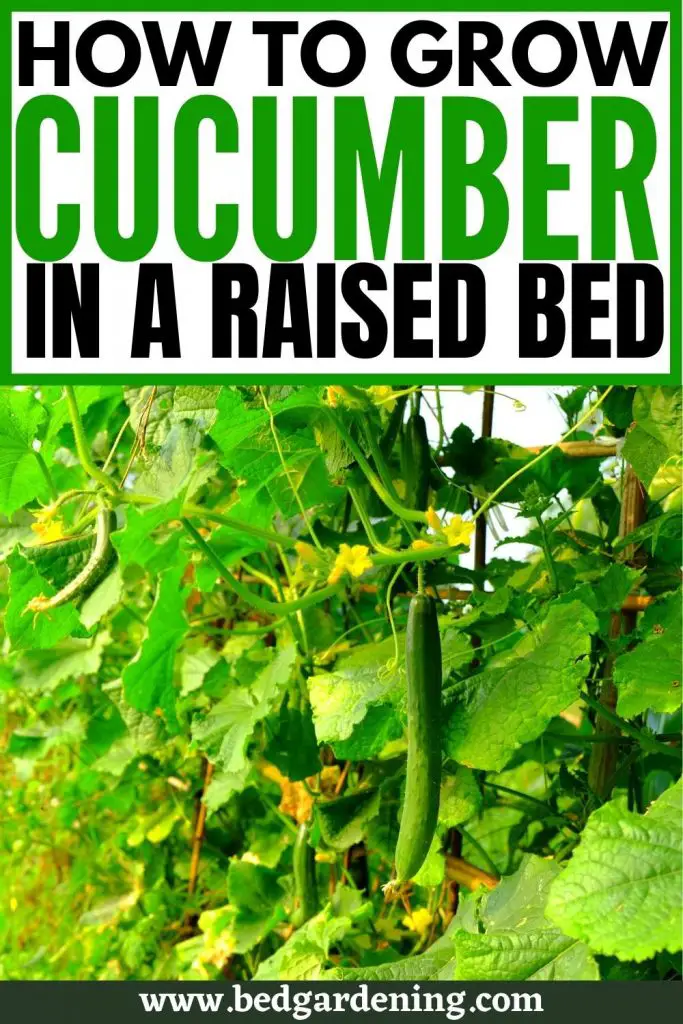Cucumbers are cool and mild, you can make smoothies in summer. Cucumber is a summer vegetable and you can easily grow them in a raised bed. If you have a small garden then don’t worry because their growth is possible in a small place.
It needs proper sunlight and consistent moisture which will provide crisp fruits throughout the whole summer. It has a sweet and refreshing flavor but sometimes it gives a bitter taste.
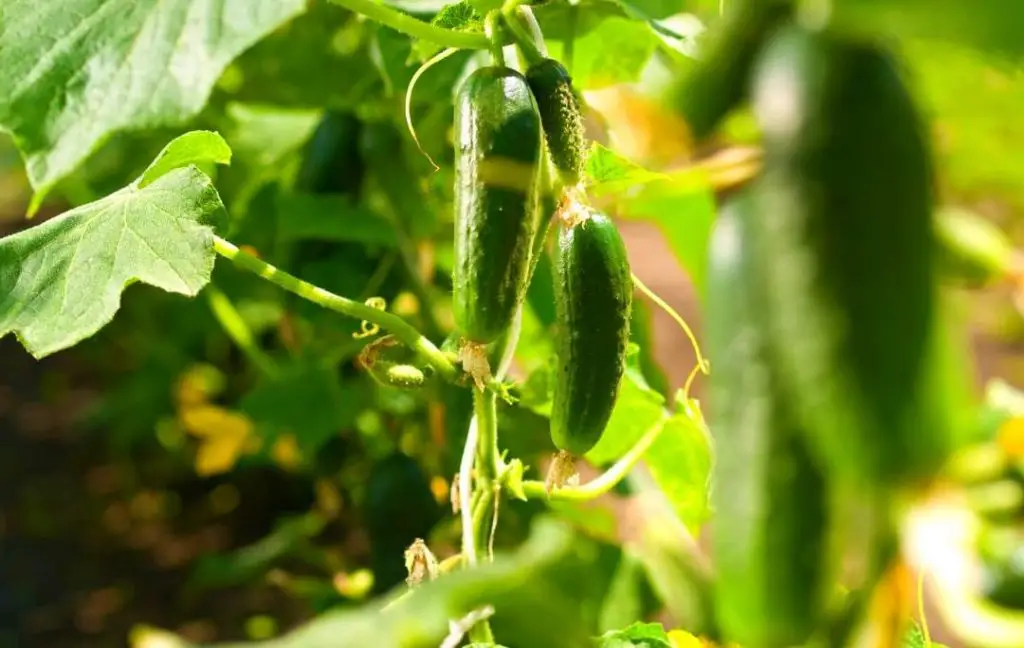
This bitterness is developed due to the stress because it depends on the severity of stress and it is caused by insufficient and uneven moisture. Sometimes temperature extremes and poor nutrition can also play a part.
Varieties of Cucumber
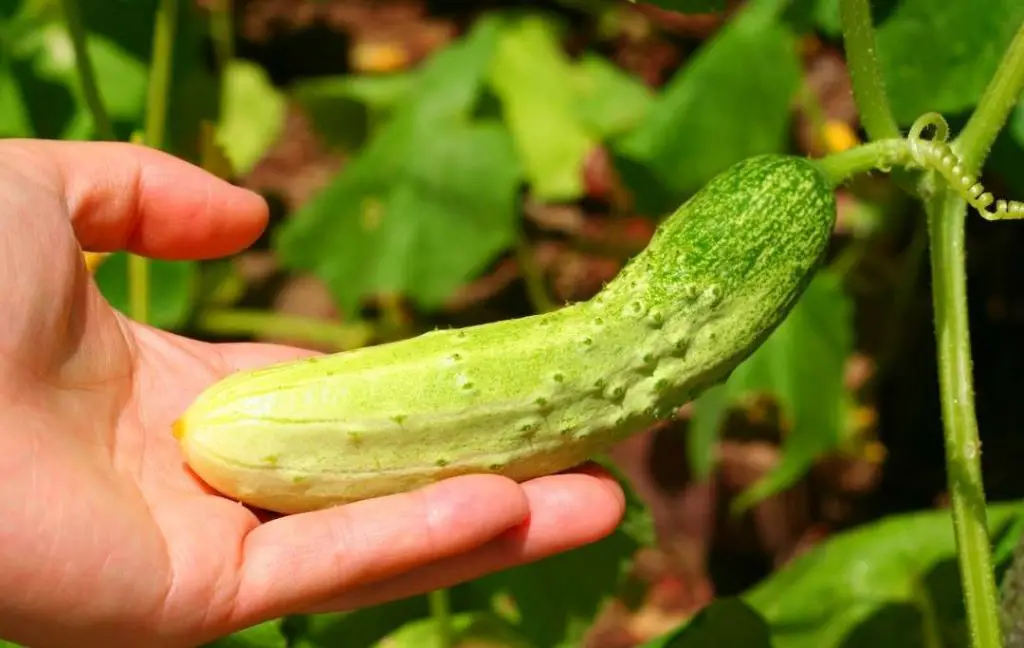
The main three varieties of cucumbers are:
- Slicing
- Pickling
- Burpless/ Seedless
Several cultivars have been created through these types. The origin of the cucumber is from South Asia but now it is growing in the different continents because of global trade.
When you decide to grow cucumber in your raised beds, it is very necessary to know about its different varieties, because many cucumbers are prolific and offer a large harvest but some hybrids often have better disease resistance.
Here we will discuss some types which will help you to decide which type is best for your vegetable garden or your raised bed. You can also plant two or three varieties of cucumber so you can get a different taste.
1- Salad Bush
Salad Bush is a good option for growing in small gardens and containers. The height of this plant is about two feet long and gives full-sized slicing cucumbers. You can harvest them when they are 8 inches long.
2- Space master
From this variety, you can get 6 to 8-inch long cucumbers within two months. You can grow them easily in pots as well as in hanging baskets. The height of this type of cucumber plant is about 2 to 3 feet long.
3- Parisian Gherkin
It is a semi vining cucumber that has a height of about 2 to 3 feet long. You can get dozens of mini cucumbers that are flavorful green. This type of cucumbers has small black spines and very crisp and sweet flavor.
4- Lemon
It is a popular variety that has an unusual round shape. Its color is pale green to light yellow, the height of this plant is about 8 feet long and able to produce dozens of cucumbers.
The best time to harvest them is when they are pale green to light yellow. one thing keeps in your mind that if their color will turn into bright yellow they are over mature and seedy. You can’t eat them.
5- Picolino
The color of this type of variety is deep green and best harvested when four to five inches long. It is a cocktail type cucumber and can grow with the height of about five feet long. It has the potential to give you mini cucumbers all summer long.
6- Long Green Improved
It is a prolific heirloom which has a dark green color. Its fruit will mature within 65 days.
7- Marketer
It has a mild and sweet flavor. It can easy to grow in a hot and humid climate. You can get 8 to 9 inches long cucumber having a dark green color. The maturity time of this type of cucumber is within fifty-five days and belongs to pickling variety.
8-Muncher
Muncher is 9 inches long open-pollinated cucumbers and ideal for slicing. You can also pick it at 4 to 5 inches for pickling. The seedless cucumber which has a sweet and mild flavor. You can get mature fruit in 65 days.
Read More: How to Build a Raised Garden Bed With Trellis
When to Plant Cucumber?
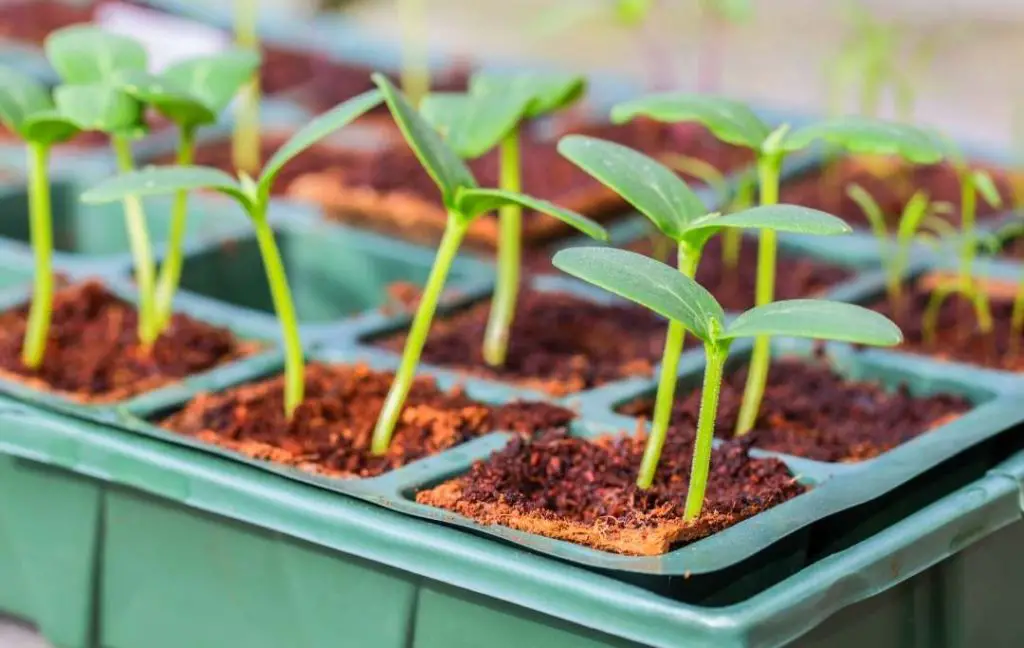
Cucumbers like hot weather, it grows well at a temperature of 15 °C. The best time for planting them is after the last spring frost. Don’t rush to plant cucumbers too early because cold is not good for their growth.
If you are growing them in pots you should use biodegradable pots to prevent transplant shock. You should cut holes in the plastic for the seeds and keep the soil evenly moist through any irrigation system which may be drip or soaker hose.
Read More: Best Irrigation System for a Vegetable Garden
Prepare Raised Bed
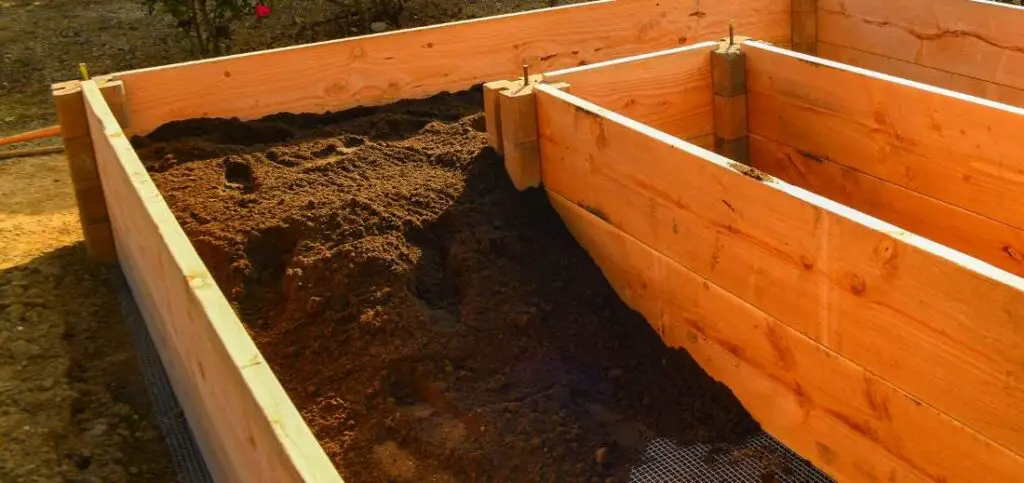
Cucumbers belong to the Cucurbitaceae family which includes summer squash, winter squash, gourds, and melons. First of all, select a site with full sun. Healthy soil will keep your plants well-fed and give and provide moisture than poor quality soil.
If you are growing cucumbers in raised beds then don’t use ordinary garden soil. Cucumbers need fertile soil so you should make compost and manure before planting. Avoid the soggy and compacted soil and be sure that the soil is moist and well-drained.
The pH of the soil must be around 6.5 to 7.0. They need warm soil and consistent moisture. You can use different simple ways to keep your plant from getting thirsty.
Plant seeds 1 inch deep and keeps a distance of 2 to 3 feet between the rows.
If you are living in a cold area you should use black plastic to cover the soil to make it warm. The vine can climb on a trellis. A trellis is a good idea for limited space. trellising also protects the roots from damage.
Read More: How to Fill Your Tall Raised Beds?
Trellis for Cucumber in Raised Beds
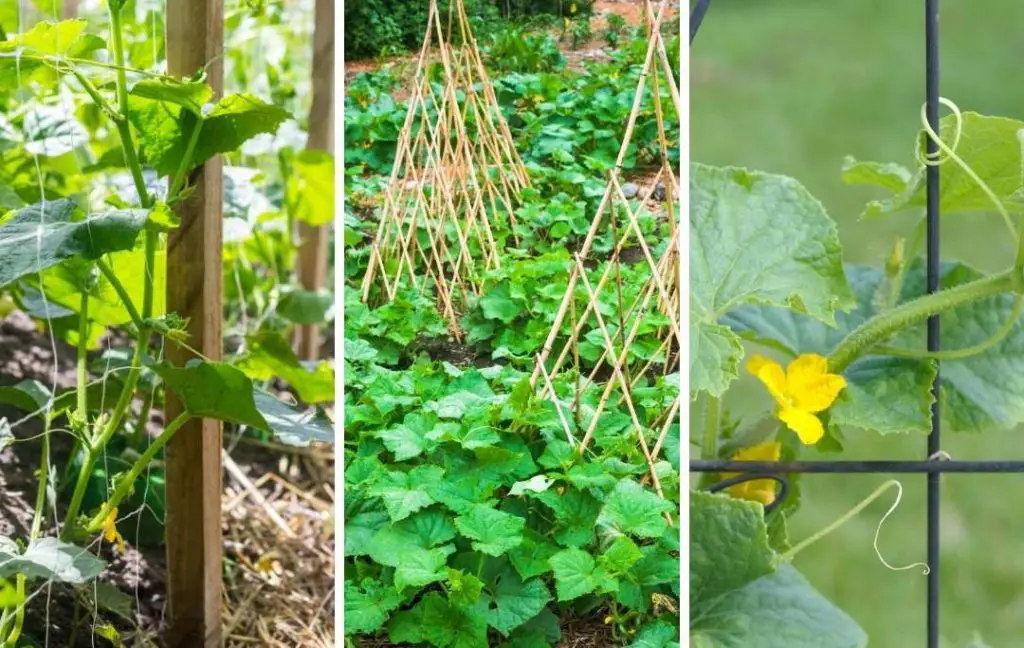
If your cucumber plants crawl on the ground, it is not a healthy way to grow any plant. You will have to give support to such types of plants. if the vine is crawling on the ground it will easily get infected from different fungal diseases.
It will not easy to avoid pests, they will attack your plants easily, and getting fresh healthy cucumbers will become a dream. To evade such problems, use trellis to support them and keep them above the ground.
A trellis is a frame that helps cucumber plants to grow on a wire. This frame is ideal for preventing them from the soil and supporting your plant. You can build trellis’ frame from wood and fill the space with chicken wire or you can use fence wire.
Another way of making is from PVC pipes, you can also use ropes to fill it if your budget is very low. This will become a low-cost filling. The size of the frame is according to your raised bed. You can easily make it at home, it doesn’t need high skills.
Read More: 12 BEST Trellis For Cucumber In Raised Beds
How to Grow Cucumbers
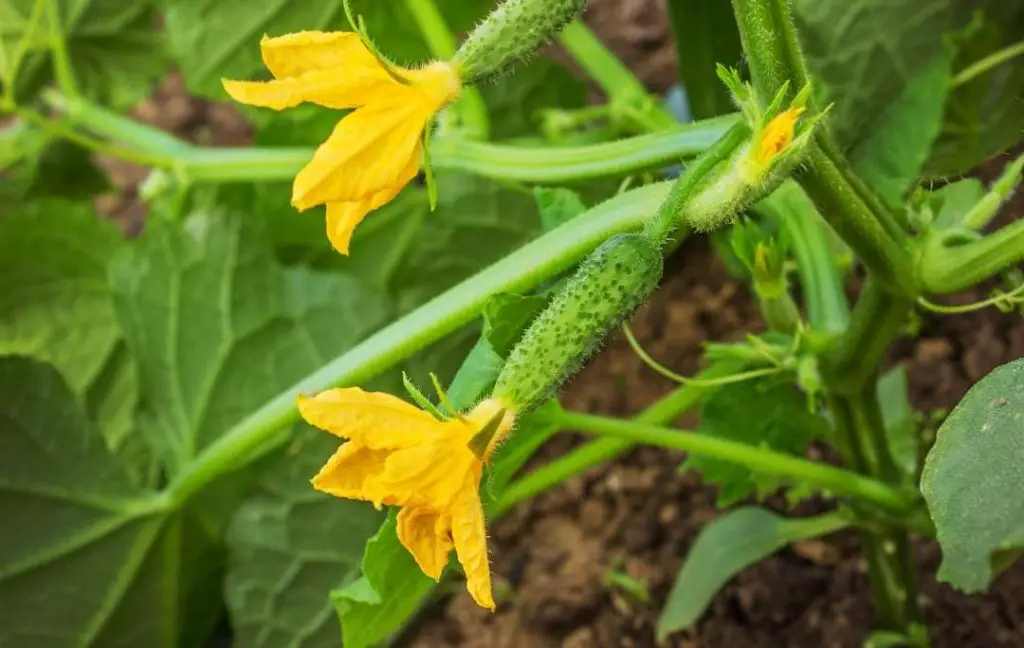
Once you have found the perfect cucumber for your garden. The planting process for any variety is the same.
- You should remove the weeds and add fertilizer.
- You can check the soil temperature by using a soil thermometer. When you find a suitable temperature plant the seeds. Cold weather will not let seeds to sprout in soil.
- The main requirement for cucumber is water. Make it possible to provide consistent water per week. They need at least one inch of water. You can easily check the time of giving water by putting your finger in the soil when you feel it dry, it is the time to water. When fruits form, increase the quantity of water supply.
- To retain the moisture in the soil using a layer of mulch.
- You can attract bees and set more fruit by spraying sugar water.
Harvesting
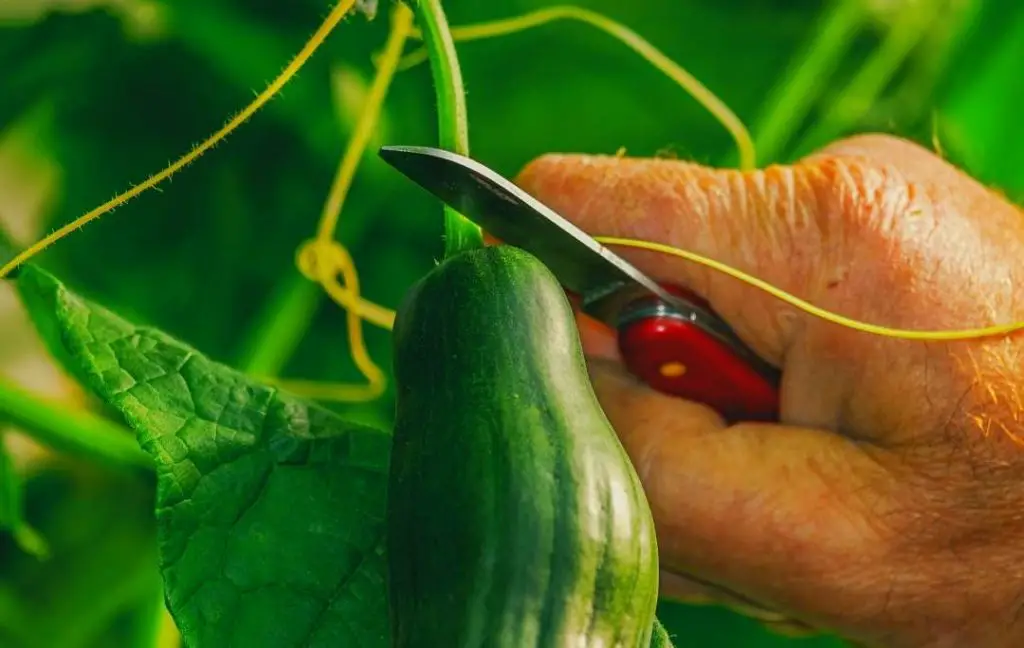
Picking the cucumbers at the right time will encourage the plant to produce longa throughout the season. Start harvesting cucumbers, when they are seven to nine inches long. Their color must be bright dark green so you can enjoy the fresh taste of them.
If you leave them to grow larger their taste will turn into bitter. It is important when you pick cucumbers, leave at least one-inch section of stem attached to the cucumbers. This will help to prevent cucumber from rotting during storage.
Read More: 10 Waist High Raised Garden Beds Plans
How to store Cucumber
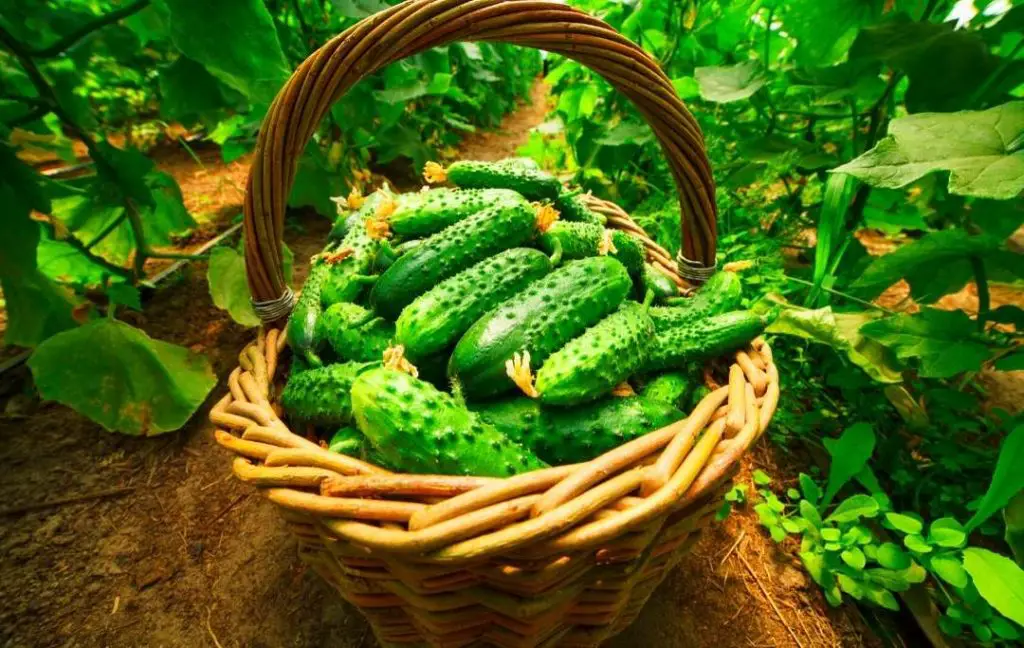
After harvesting, first of all, wash your see and if you see any spot on them cut the side of the spot. Dry them by using a dishtowel. Moisture will rot them so make sure they are dry before storing because excess water on the surface will increase spoiling.
You can also wrap them in a paper towel so they will become moisture-free. Now tuck them inside a plastic bag keep open at the top for airflow to avoid condensation. Keep them in the fridge but do not freeze them. You can store them for a week in your fridge.
Diseases and cure
If you are noticing brown, white, or yellow spots on the leaves. It indicates that your cucumber plant may be infected due to any fungal disease, it will destroy your plants and your hard work will be wasted.
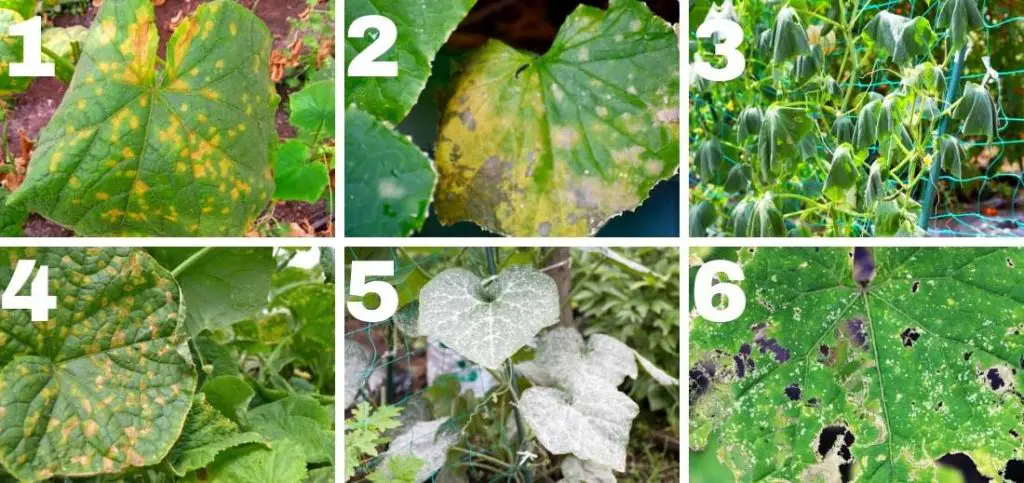
The common diseases of cucumber plants are Alternaria Leaf Blight, Bacterial Leaf spots, Cucumber Mosaic, Downy Mildew, Bacterial Wilt, and Powdery Mildew. Here we will discuss some symptoms of a few diseases and their treatment.
By following these instructions you can enjoy a healthy and fresh cucumber from your own growing area.
1- Alternative Leaf Blight
In alternative leaf blight, fungal spots appear on the leaves. This can easily spread through soil and water. Wet and warm conditions are suitable for spreading this disease. It usually affects leaves by making brown spots. After some time the leaves start to die, you can spray with a fungicide to fight against this disease for your cucumber plant.
2- Cucumber Mosaic
The mosaic virus which can spread through grafting of infected a plant onto a healthy plant. It also spread due to the use of infected tools, boots, and gloves. The line patterns which may be white, yellow, light to dark green are signs of this disease. You can prevent your plants by removing infected plants and weeds. Sanitize garden tools and use spring insecticides and avoid grafting.
3- Bacterial Wilt
Cucumber Beetle is an insect which is the reason for this disease. Leaves will become yellow and after some time stems and vines will also dry up. You can treat this disease only by removing infected plants from your garden.
4- Downy Mildew
Light green and yellow spots on leaves are symptoms of this disease. You can spray with a fungicide to treat this disease.
5- Powdery Mildew
It is commonly found in greenhouse-grown plants. Fuzzy white spots for a layer of white powder on the stem leaves will appear during this disease you can easily treat with powdery mildew as compared to fungal disease. You can treat it with a spray of chemical or organic fungicide or by emoving inadequate plant.
6- Bacterial Leaf Spots
These diseases spread to the insect bites and through seeds. During this disease, small brownish spots appear which quickly turn into black. Use plant covers or row covers to prevent insects and weeds. Provide air circulation by making the spacing between the rows of cucumber plants.
